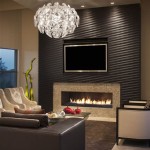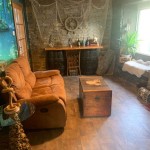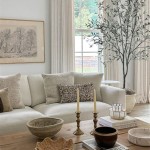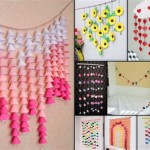Things To Decorate A Living Room
The living room serves as a central hub for daily activities, relaxation, and social gatherings within a home. Its design and décor significantly impact the overall mood and functionality of the space. Effective decoration transforms the living room into a welcoming and aesthetically pleasing environment. This article provides a comprehensive guide to the key elements and considerations involved in decorating a living room.
The process begins with understanding the existing space. Assess the size and shape of the room, noting natural light sources, architectural features like fireplaces or built-in shelves, and existing color palettes. Identifying any potential challenges, such as a small footprint or awkward angles, permits the development of a tailored decoration strategy. Functionality must also be considered. Determine how the room will be used. Will it primarily serve as a space for entertaining, relaxing, watching television, or a combination of these? The intended purpose heavily influences furniture selection, placement, and the incorporation of various decorative elements.
Color plays a pivotal role in setting the atmosphere of a living room. The choice of wall color forms the foundation of the design scheme. Neutral tones, such as whites, grays, and beiges, provide a versatile backdrop that complements a wide range of furniture and décor. These colors create an airy and spacious feel, making them suitable for smaller living rooms. For those seeking a bolder statement, consider accent walls painted in deeper hues or utilizing textured wallpaper to add visual interest. The color palette extends beyond the walls, encompassing furniture, textiles, and decorative accessories. A cohesive color scheme, often built around a combination of a primary color, a secondary color, and an accent color, promotes a unified and visually appealing design.
Furniture Selection and Placement
Furniture forms the backbone of the living room. A carefully curated selection of pieces enhances both the comfort and functionality of the space. The sofa serves as the focal point and should be chosen based on its size, style, and seating capacity. Consider upholstery materials that are durable and easy to clean. Complementary seating options, such as armchairs, ottomans, and loveseats, can be incorporated to accommodate various needs. Coffee tables, side tables, and media consoles provide surfaces for placing drinks, displaying décor, and storing essential items. The placement of furniture impacts the flow and accessibility of the room. Establish distinct zones for conversation, entertainment, and relaxation. Allow ample space for movement between furniture pieces to avoid overcrowding and promote ease of navigation. Consider the placement relative to windows, doorways, and the television. Proper furniture arrangement optimizes both functionality and aesthetics.
Textiles and Soft Furnishings
Adding textiles injects warmth, texture, and personality into a living room. Curtains provide privacy, control light levels, and frame the windows. Choose fabrics that complement the overall color palette and design style. Consider layering curtains with sheers or blinds to offer flexibility. Area rugs define seating areas, add softness underfoot, and contribute to the overall aesthetic. Select a rug size that adequately anchors the furniture and complements the room's dimensions. Pillows and throws provide additional comfort and accent the sofa and other seating areas. Experiment with different textures, patterns, and colors to add visual interest. These textiles can easily be changed to update the look of the room seasonally or to reflect personal preferences.
Lighting Design
Lighting is crucial for creating ambiance and functionality in a living room. A well-designed lighting scheme incorporates multiple light sources to meet varying needs. Overhead lighting, such as recessed lights or ceiling fixtures, provides general illumination. Table lamps and floor lamps offer task lighting for reading, working, or highlighting specific areas, such as architectural details or artwork. Dimmers allow for adjustable light levels, enabling the creation of a range of moods. Consider the placement of light fixtures in relation to furniture and key focal points. Layer light sources to create a balanced and inviting environment. The choice of lamp shades and bulb types impacts the quality and color of the light, influencing the overall atmosphere. Warm-toned bulbs create a cozy feel, while cooler tones offer a more contemporary aesthetic.
Decorative Accents
Decorative accents add personality and finishing touches to any living room. Artwork, including paintings, prints, and photographs, enlivens the walls and reflects personal taste. Carefully select pieces that complement the color scheme and overall style of the room. Mirrors can create the illusion of space and reflect light, enhancing the brightness of the room. Vases, sculptures, and decorative bowls add visual interest to surfaces, such as coffee tables, shelves, and mantels. Plants bring a touch of nature into the living room, adding color and freshness. Consider incorporating a variety of textures and materials to create a visually stimulating environment. Grouping decorative items in odd numbers often creates a more balanced and aesthetically pleasing arrangement. Personalize the space with items that are meaningful and that reflect individual interests and experiences.
Storage Solutions
Incorporating adequate storage solutions helps to keep the living room organized and clutter-free. Bookshelves provide space for displaying books, decorative objects, and storing media accessories. Media consoles and cabinets can house televisions, sound systems, and other electronic equipment, while also offering drawers for storing remotes, DVDs, and other items. Ottomans with built-in storage offer a dual function, providing both seating and a place to store blankets, pillows, or other items. Baskets and decorative boxes can be used to conceal clutter and maintain a tidy appearance. Consider incorporating storage that blends seamlessly with the overall design aesthetic and integrates with other furniture pieces. Utilizing vertical space by incorporating wall-mounted shelves or cabinets maximizes storage capacity, especially in smaller living rooms.

How To Decorate A Living Room 11 Designer Tips Houzz

How To Decorate A Living Room 11 Designer Tips Houzz

50 Inspirational Living Room Ideas Design

Seven Effective Drawing Room Decoration Ideas Design Cafe
:strip_icc()/cdn.cliqueinc.com__cache__posts__212361__-2030968-1483470364.700x0c-8571e60cad7b42a981ab29ae10b5c153-497b002f87af4747b2ab38b560e7c0fd.jpg?strip=all)
How To Decorate A Living Room 20 Ideas And Common Mistakes

How To Decorate A Living Room 11 Designer Tips Houzz

All About Living Room Decor For Your Home Design Cafe
Interior Designers Reveal The Mistakes You Re Making In A Living Room

10 Stunning Small Living Room Ideas To Maximize Space

77 Best Living Room Decor Ideas 2025 Unique
Related Posts







